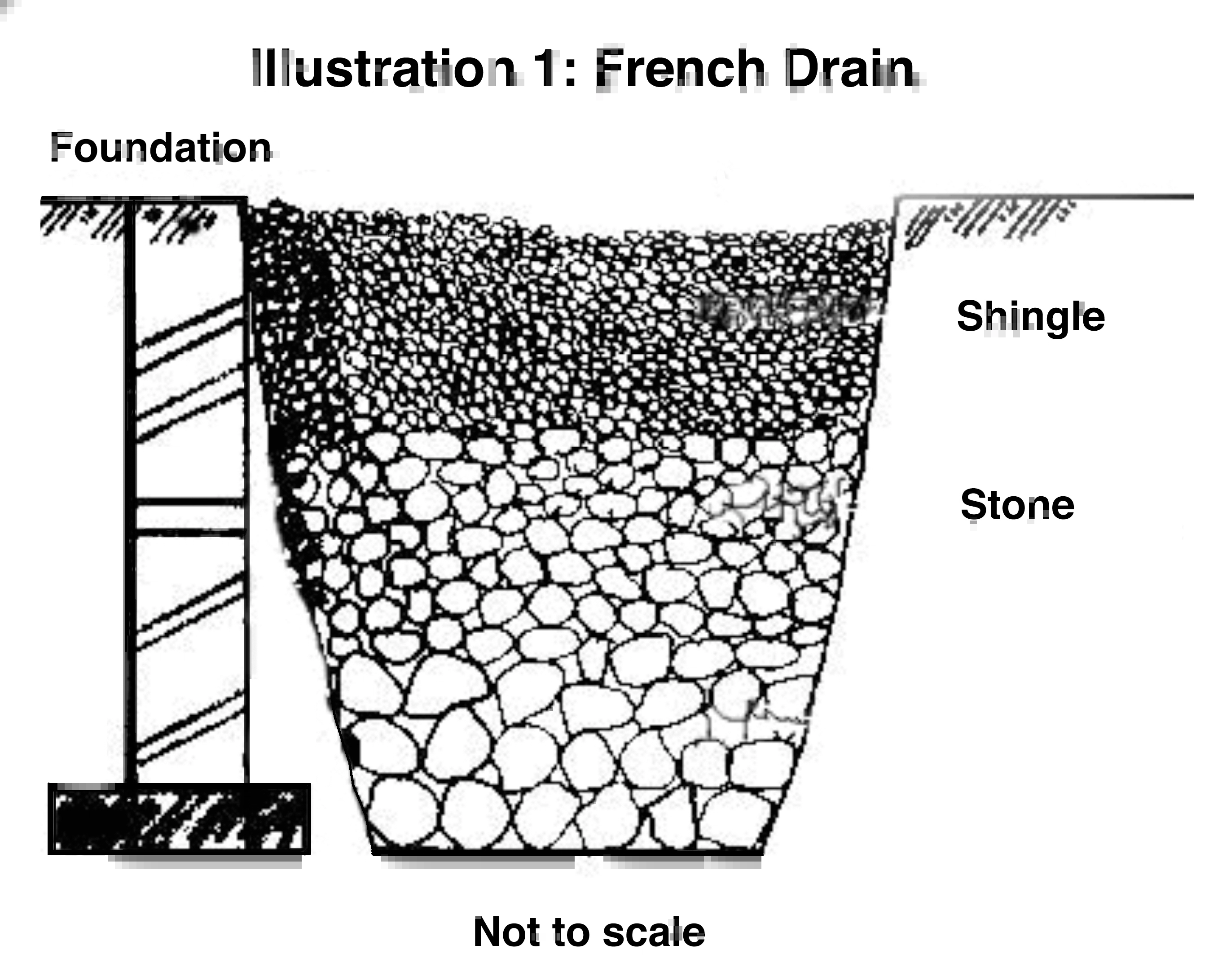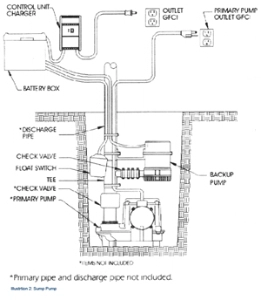Methods to Prevent Damage from Water Intrusion
Winter in the Pacific Northwest may include drenching rainstorms, driven by southerly winds. This causes a wide range of problems to buildings, all as a result of water intrusion. If you have already lived through the dreaded experience of a flooded basement, then you know how much damage it can cause. Even one inch of water can take many hours to clean up and cause thousands of dollars in damaged furniture and carpets. Apart from the obvious damage to your belongings, flooding can also cause plumbing problems, health problems from mold and mildew, a damaged foundation, and rotted wood; all of which are troubles that bring down the value of your home.
It is the purpose of this post to present two common solutions to water intrusion:
- French Drain Systems
- Sump Pumps

French Drains
"French drain" refers to a ditch filled with gravel, rock or perforated pipe that redirects surface and ground water away from an area. They are commonly used to prevent ground and surface water from penetrating or damaging building foundations.
The key to understanding how the system works is knowing that there is a vast quantity of air in the upper horizons of soil. In addition, we know that gravity will pull water down slope. Furthermore, water will take the path of least resistance. It will flow down through the gravel and into the pipe much more readily than force its way past soil particles!
The trick to the whole system is providing a means for the end of the French drain system to expose itself on the lowest portion of your lot. This is where the collected water will discharge. You can often disguise this pipe exit point with decorative gravel, boulders or large rocks. You may also want to plant vegetation that likes to have its feet wet! Anything will look better than a simple pipe sticking out of the ground.
Interconnecting 4-inch perforated pipe in a simple grid work will work well to drain a back or side yard. The system of pipe works like a maze in reverse. Water enters any of the pipes in the maze or system. One of the pipes in the maze continues around the house or the yard to a low spot. The water flows from the soil into the pipes and finally exits at the end of the pipe. Yards equipped with this system will drain in hours, not days!
Sump Pumps

A sump pump is a last defense against flooding because it pumps out water from the lowest section of the basement before the water level reaches the basement floor level. As groundwater level rises it is diverted into the sump hole. When the water reaches what is called 'the critical level', the sump pump begins to pump it out through a pipe that leads outside and away from your foundation.
The sump pump has recently become more important, especially in newer homes since the Federal Clean Water Act no longer allows builders in many municipalities to drain rainwater collected by gutters into sewerage systems. Water collected on the roof of your home and drained by your gutters can cause flooding if it is not carried far enough away from your foundation.
There are generally two types of sump pumps: pedestal and submersible. The pedestal pump's motor is mounted above the pit, where it is more easily serviced but also more conspicuous. The submersible pump is entirely mounted inside the pit, and is specially sealed to prevent electrical short circuits.
Conclusion
Both French drains and sump pumps can be valuable aids in preventing water intrusion and damage in the Pacific Northwest. If you require help in the design and installation of either of these valuable defenses, please contact Mr. Handyman of North Seattle.About Mr. Handyman
Mr. Handyman is a professional home repair and maintenance service that takes pride in its promise of "On Time. Done Right." We provide repair and light carpentry services to homeowners, primarily for jobs that are 2 hours to 2 days in length. We are bonded and insured and we run criminal background checks on all our technicians to minimize risk to our customers. Our technicians are direct employees (not contractors) and we pay their taxes, social security, workers' comp insurance, and other benefits.
 Click to call
Click to call


